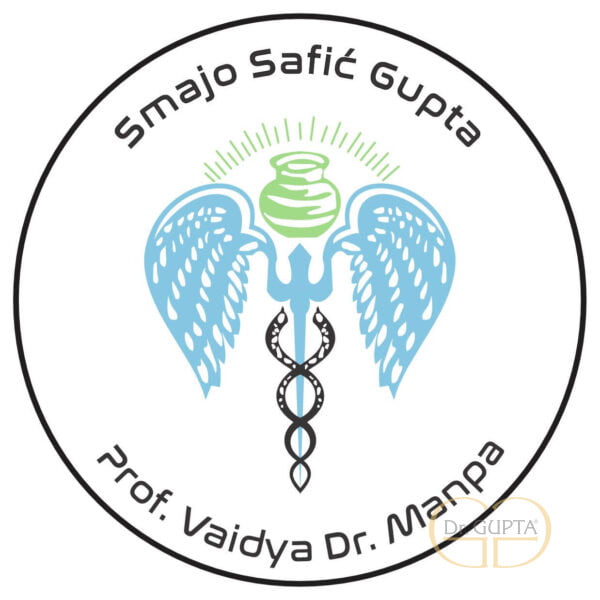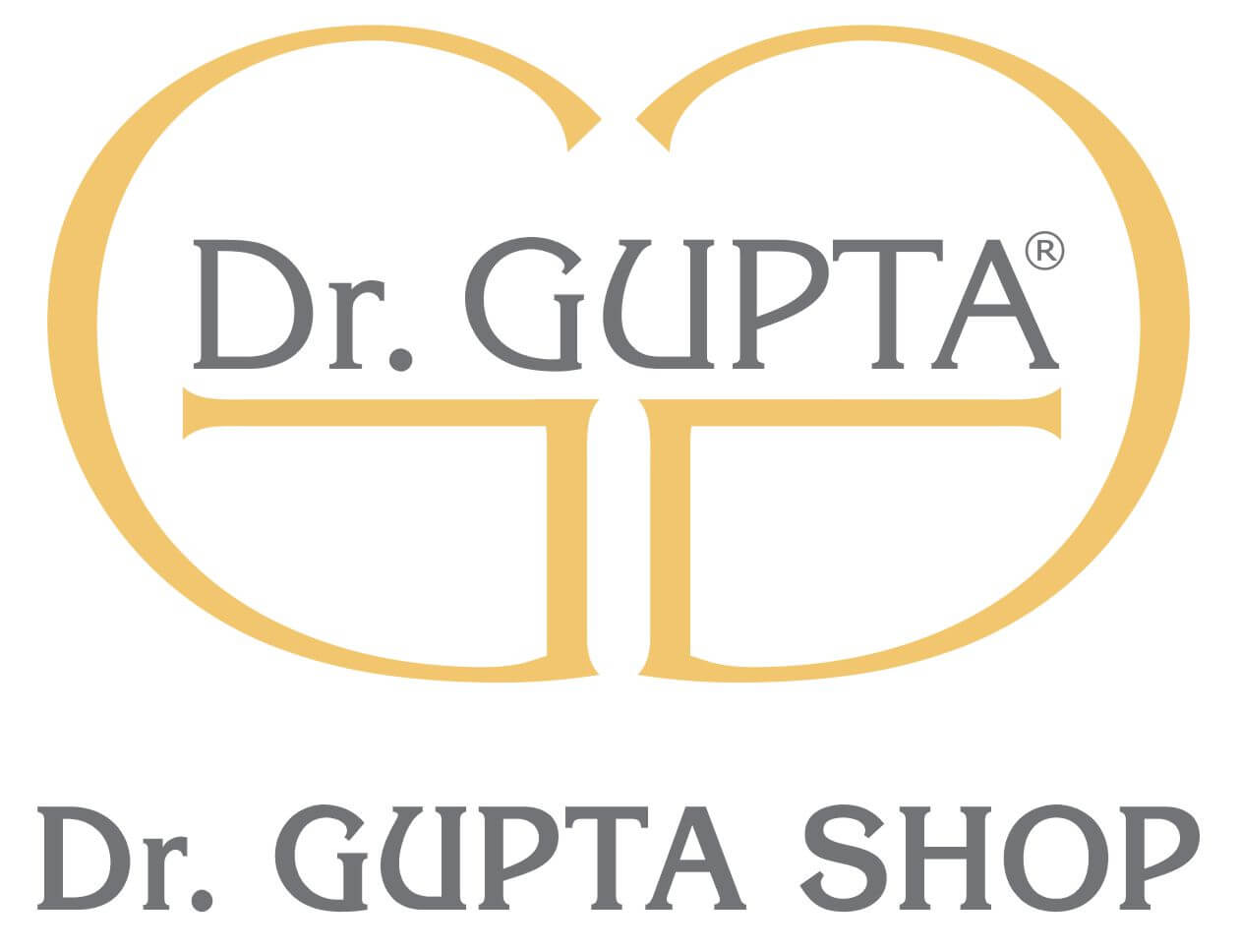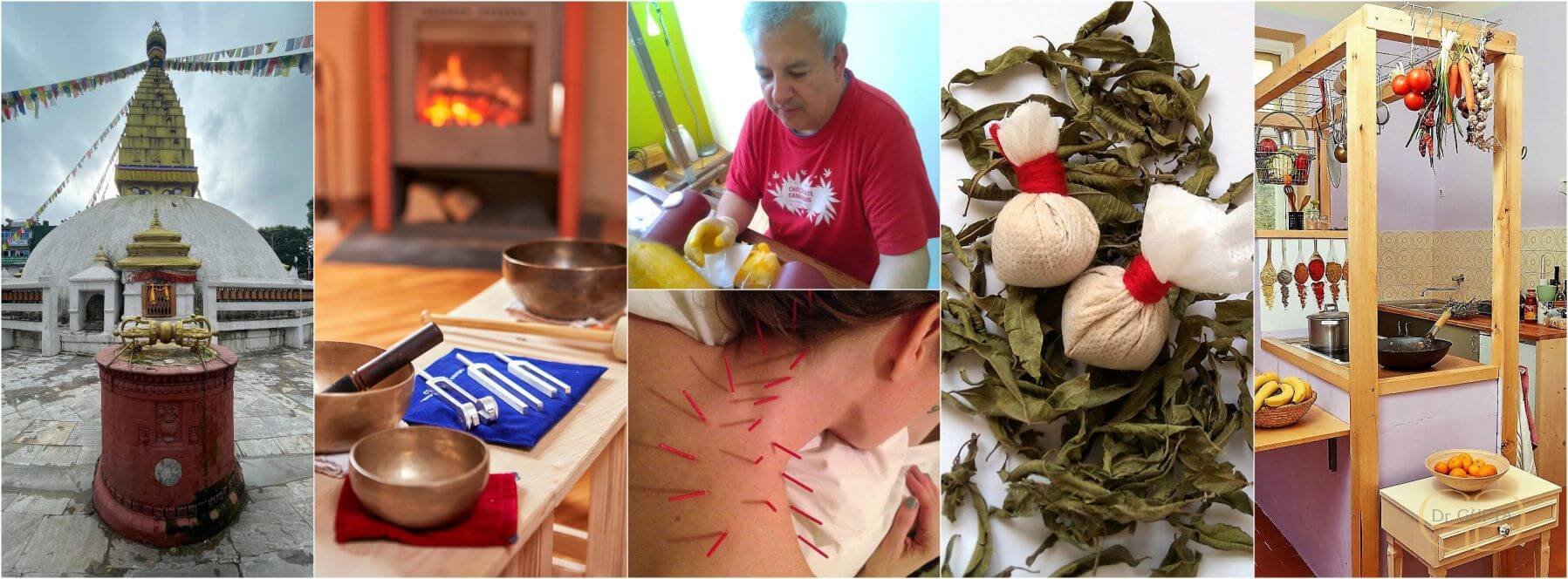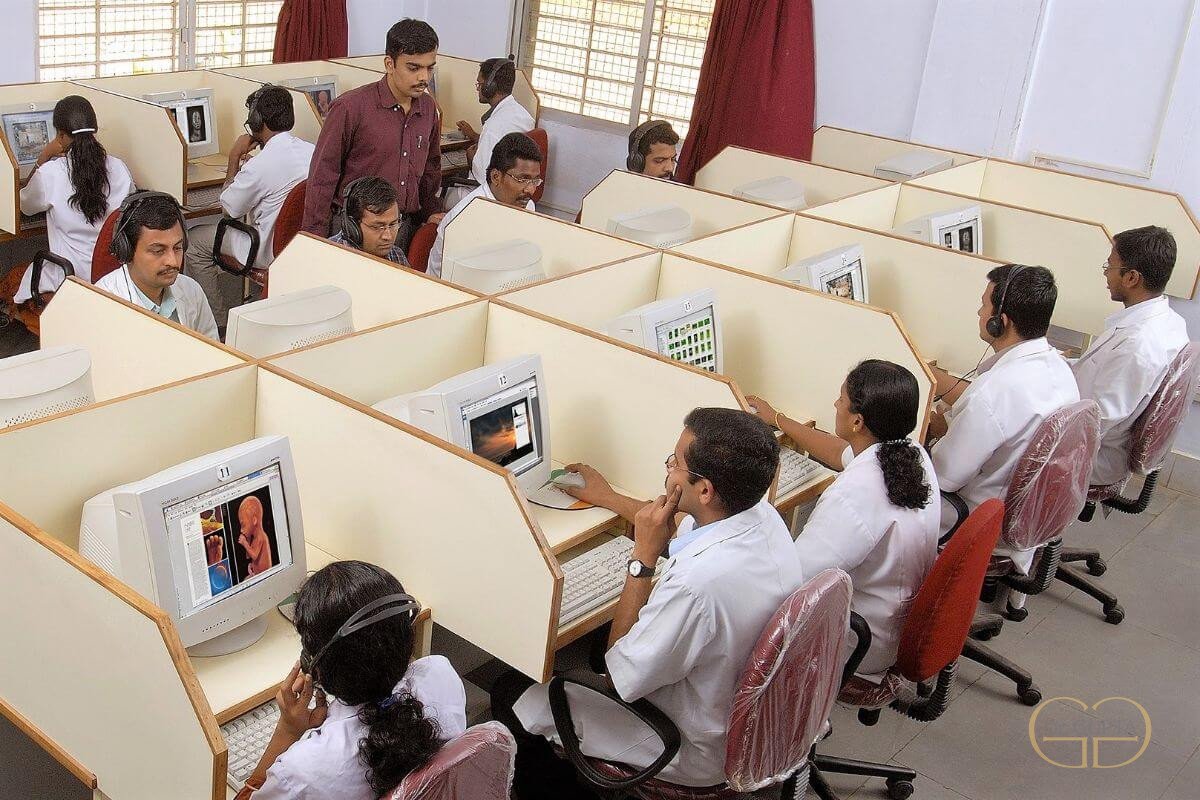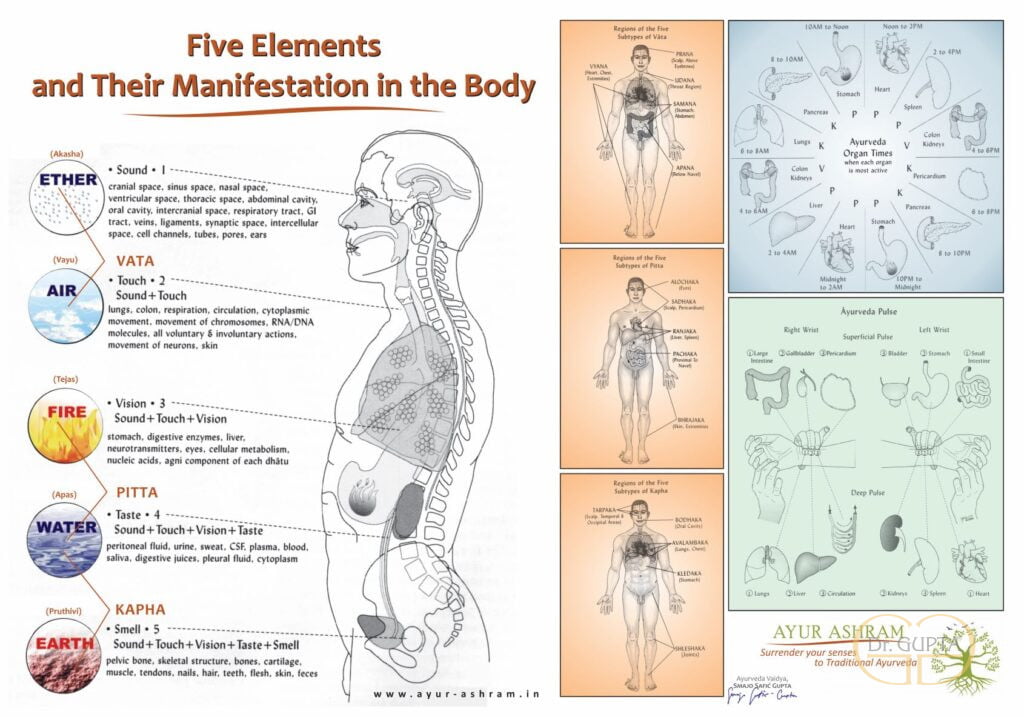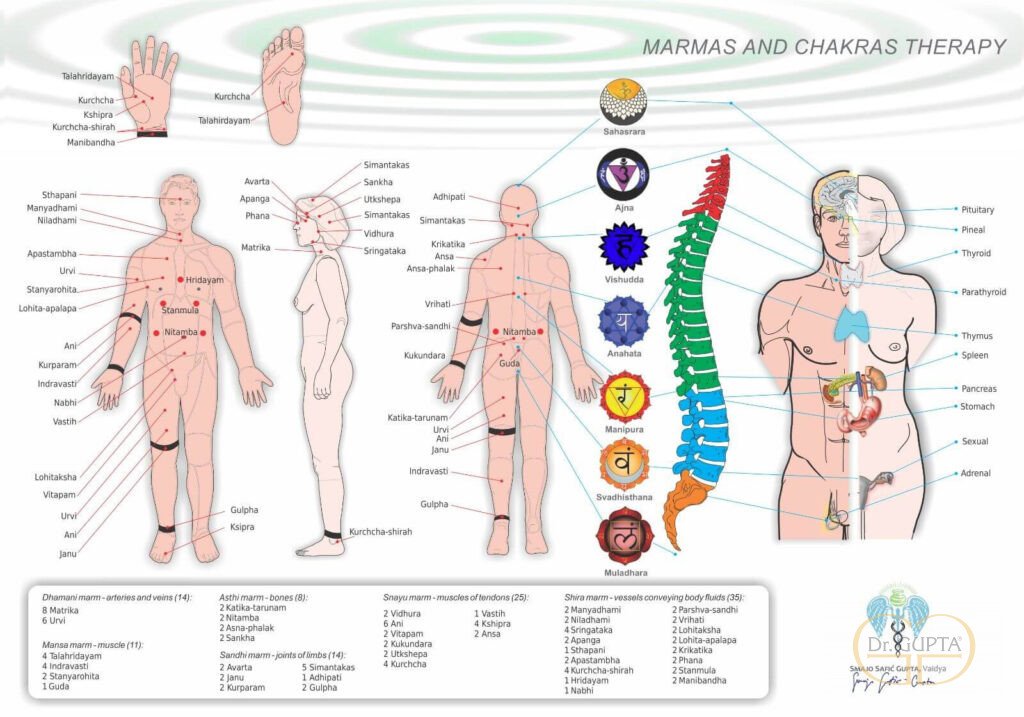The primary goal of training in the Institute of Ayurveda, Ayur Ashram (since 1999), is that after training in physical therapy and rehabilitation, the traditional therapeutic system as one of the oldest and natural systems (in India and Tibet) can be offered in your own environment. The great importance of learning is to interactively help you to offer people a designed and feasible therapeutic process similar to the whole world of satisfaction with human physical well-being. A well-educated and conscientious specialist is the wealth of the state / the environment you live and work in. The time frame of learning depends on the student, i.e., his field of practice and academic knowledge, i.e., what school / education he completed and what knowledge he has already acquired / practised, as well as the chosen field of traditional learning-treatment he chose for further practice. The goal of education and training is determined by the student during the first online (or physical meeting) interview about what type of therapy he would interactively learn and work / provide after training – obtaining a Diploma or Certificate in work environments such as: Health resorts (ayurvedic processes, special therapies); Spa centres and Hotels (wellness program); Massage salons (body and soul services / special facial and head massage program); Other types of services – health tourism (therapeutic and relax programs, detoxification program), psychosomatic condition counsellor (meditation, jyotish medical therapist), nutrition (lifestyle). Welcome to the education or training in group or individually for everyone who wants to become closer to the traditional therapeutic Integrative approach in their work / life: Masseurs; An Integrative Manual Therapeutics; Physiotherapists; Chiropractors; Acupuncturists; Yoga instructors; Nutritionists; Naturopath-practitioners; Art & Music therapists; Astrologer-consultants; Homeopath-consultants; Bach’s Flower therapists; Medical staff / technicians; Doctors of medicine; Dentists; Veterinarians; Osteopath therapists; Psychologists; Pharmacists, etc., on the journey to promote the integration of safe and evidence-based traditional and complementary medicine.
Welcome to the desired education, i.e., gaining knowledge from an Ayurvedic masseur therapist to an Ayurvedic doctor (Bachelor of Ayurvedic Medicine and Surgery – B.A.M.S.); from primary knowledge of the Naturopathy Tibetan medicine to a doctor specializing in Acupuncture. Academic credit earned under the Institute of Ayurveda, Ayur Ashram (mentor Smajo Safić Gupta, Vaidya – Manpa, the bearer of the teaching of Vedic knowledge) can also be used for studies in Asia. Through legal regulations within the World Health Organization (WHO), Ayurveda and Sowa-Rigpa is recognized as a traditional system, and has harmonized legal documents knowledge comes under the Indian Ministry of Traditional Medicine (AYUSH) – Inauguration of Ayur Ashram (Consortium India, 28.8. 2014). The goal of education and training is determined by the student and the education provider (mentor) during the first online interview in which they agree on the type of missions they should work on after obtaining a diploma and certificate. Certificates as well as Diplomas are valid in some countries outside the Indian whole depending on the system of the Ministry of Health and Culture of Human Health Insurance. Students should be aware that the learning / study process for an Ayurvedic doctor or Naturopathy Tibetan medicine Acupuncture is very demanding and that they need to complete practical training in India or Nepal and Tibet with a specific mentor and in an institution approved by the Consortium partner in accordance with AYUSH standards. Practice is taught through observing how mentors implement processes on the client / patient with the aim that learning practice provides more memory and better visual information about the progress of the therapeutic work of the future therapist or physician.
The great importance of learning is to interactively help you to offer people a designed and feasible therapeutic process similar to the whole world of satisfaction with human physical well-being. A well-educated and conscientious specialist is the wealth of the state / the environment you live and work in. Health stems from the inner harmony of all aspects of the meaning of our lives, our thoughts, feelings and actions, which in themselves affect the sensible relationships we foster with our families, friends and colleagues. Ayurveda (India) and Sowa-Rigpa (Tibet) offers the keys to good health through harmony with nature, simplicity and a general feeling of satisfaction. Ayurveda as Tibetan medicine it connects us to the sources of creativity and happiness in the framework of our own awareness so that we can overcome our mental challenges for good. You are also invited to the “shorter workshop / course” training, which means that there is a possibility of shorter learning necessary for your quality life / work – we offer such a way of thinking for your therapeutic action / work, as well as for clients or patients to better use traditional knowledge for a happy and vital life.
Objective of learning Ayurvedic medicine – Ayurvedic medicines entails three phases of healing or the state of illness. These are Samsodhana (the process of cleansing), Samsamana (palliative care) and finally Nidanaparivarjana (the treatment of causes). In this way it does not only help with discovering the root of the physical state, but it also cures the state of the human soul and consciousness as well as conducting healing on the basis of the characteristics which are often the causes of illness or its various body states. Indian as Tibetan medicine primarily guides the person to prevent illness, in other words, to raise their vitality. Not having a deeper insight into Ayurveda many people think that we, as individuals, can be strictly categorized into one of the three Doshas Vata, Pitta and Kapha, whereas we are really made up of all three Doshas. Ayurveda teaches, that consciousness is the energy of health, which works through all five basic Elements or Panchatattva (Ether-Akashatatva, Air-Vayutatva, Fire-Agnitatva, Water-Apastatva, Earth Prithvitatva). When the organism of a person is healthy, then all five elements are in balance, but when the balance breaks down, we get sick. Marma Anatomy – points / body fields are the key (insight into health) in the body where vital fluids flow through muscles, veins, arteries, bones and joints. Marmas can be referred to as intersections between the physical, psychic, astral and spiritual bodies. A good traditional practitioner or through pulse diagnostics (Nadi Pariksha), prescribes therapeutic processes for balancing the health of all three Doshas Vata-Pitta-Kapha, along the paths which vital fluids flow through organs and glands. In the following, it is mandatory that the client / patient (preventive) or in a curative state must be given an insight into his eating habits and lifestyle, and he will be prescribed a list of Food / Diet from his/her Life environment, which covers all steps from preparation to consumption of the same – Food / Diet plan for balancing Prana or life ropes Guna that “brings or takes” away vital/immune health: Sattva Vata Guna food that sustains the body; Rajas Pitta Guna food that creates and develops the body and Tamas Kapha Guna food that destroys the body. The Ayurvedic expert obtains the parameters of the doshas through the processes of Nadi (examination) and Pariksha (diagnosis) as well as establishing the causes (Vikruti) of the illness i.e., the balancing of the state of the bodily fluids of the Dosha and Elements. Vata Dosha (ether-air) can develop allergies caused by weak immunity; Psychologically it affects the flow of thoughts – it brings freshness and joy (sound, voice and touch); Balances the mouth-nose, gastrointestinal tract, respiratory tract, stomach, muscle movement, heart rate and lung expansion-contraction. Pitta Dosha (fire and water) can develop conditions related to the work of the stomach; Psychologically, it affects giving and receiving love and compassion (sight and taste); It balances the solar plexus, temperature and metabolism (digestion and digestion), plasma, cytoplasm, serum, saliva, nose (saliva-liquid), urine and sweat. Kapha Dosha (earth and water) can develop conditions related to nutrition (obesity, thyroid disorders); It has a psychological effect, stimulating forgiveness and creating mutual warmth (tastes and smells); Balances structures (bones-cartilage-nails-teeth-hair-skin), growth, heart pathways, protects the brain and spine, creates an important lining of the stomach and abdominal cavity.
As an Ayurvedic Practitioner, you will use your knowledge to create a therapeutic program for your client that will bring vitality through determining the state / balance of the three Guna Doshas (Gunas: lifestyle, upbringing and food in which the Pranic environment we are born / Prakruti), Vikruti state of tight fluids Dosha – state of immune health). Ayurvedic medicine defines the absence of disease in various aspects of life – in the field of psychology it is defined by mental health; in the area of physical and spiritual condition, it is measured by the pathological condition through the areas of sociology, representation in interpersonal relations. For a more effective outcome in the healing of the Dosha (in other words for a preventive impact) the Panchakarma program, which focuses on the endocrine, nervous, digestive, circulatory and bone systems, is performed. This therapeutic program eliminates those toxic elements from the body which are most harmful to both health and vitality. Ayurveda aspires to a state which exceeds or creates health and seeks to prolong our lifespan without major illnesses. Ayurveda has developed through four of six Indian orthodox philosophical systems, namely Samkhya, Yoga, Niti, Vaisheshika. Samkhya literally means „calculate “and in essence it is a philosophical system which speaks about the entanglement of the eternal and unchanging soul (purusha) in the web of the changing primordial matter (Prakiti). The metaphysics of Samkhya is supplemented by Yoga, a practical method, which aims for absolute freedom defined as „the cessation of all sources of consciousness “. Neither does it have two meanings as in „the rules of logical reasoning“ or „the rules of successful control.” Vaisheshika literally means „the science of multiplicity “, which aspires to define the world through physics. Each of these four forms of science belong to the most ancient of writings and they were established and passed on orally to many schools by the ancient sages, the Rishis. Ayurveda is the medical branch of the Indian subcontinent and entails Yoga, Vedanta, Tantra and Buddhism. Both Ayurveda and Yoga are also connected to the system of Tantra, which offers various techniques for changes in the nature of consciousness. However, real Tantra is really so much more than the currently popular ideas about it, which merely promote it as a system of sexual (fantasy erotic) practices. Tantra (psychology of the Life, Ayurveda medical Jyotish practitioner – Vedic psychology) is a complete system for human development, which gives us the opportunity to improve all aspects of our lives. The Ayurvedic medicine Tantric interpretation of a healthy and happy life is rooted in our positive thinking and daily work as well as our relations to ourselves and others. With its good intentions, the human being is spreading the blessings and thoughts, which, in turn, can return to him/her manifold.
The education itself has No exams (during the duration of the doctoral study – the study team-committee is present and included in the final exam/diploma defence), but the student studies in groups and individually in order to gain knowledge for starting or upgrading the Ayur Life. Additional learning material is adapted to each individual for further learning, both academically and linguistically!
The learning period for Ayurveda Therapist Masseur is divided in proportion to six (6) months. After the acquisition of 50 hours (45 minutes / school hour) of practical work, the participants receive a Certificate (description of the skills won) and a Diploma. The educational program includes areas: Anatomy and Physiology, Psychology, Ayurveda communication and Ayurveda skills of listening to the intangible aspects of the body: Soul, Spirit, Intellect, Will, Conscience, Mind, Emotions, etc., Several types of Ayurveda techniques of Rubbing and Marma therapy, Yoga and Meditation. Upon completion of the practical knowledge, the opportunity for learning is opens up for the student to further learning – knowledge of study of degree Panchakarma Therapist Certification: Pharmacology for therapy; Pharmaceutical science; Pathology; Toxicology; Medicinal functions of Integrative procedure for the Therapeutic program of Panchakarma.
Learning for Diploma Panchakarma Therapist Certification, Bachelor includes Theoretical Education to “Distance” through the Internet (written material for learning theory provides mentor) and mandatory training for 90 days (3×30 days) by agreement with a particular mentor at an institution in India approved a consortium partner to the Institute of Ayurveda, Ayur Ashram in accordance with AYUSH standards. Defining from the needs by of the profession Panchakarma program is the possibility of practice in the surgery room / salon in the city-country from where the students comes or at the Institute of Ayurveda, Ayur Ashram in Europe or India. The educational practical program depends solely on the equipment and the plant – oil material for the implementation of the Panchakarma program. The educational program includes the following areas: Ayurvedic psychosomatics and diagnostics, the basic principles of Ayurveda treatment, manipulative and manipulative therapy, diet with appropriate practice with medicinal herbs and spices with an emphasis on the digestive system. Upon completion of the practical knowledge, the opportunity for learning is opens up for the student to further learning – knowledge of study of degree Ayurveda Physician: Psychotherapy, Counselling; Detoxification therapies – the processes; The History and Philosophy of Ayurvedic medicine; Philosophy of language in Ayurveda medicine; Anatomy and Physiology.
Studying Ayurvedic medicine (Bachelor of Ayurvedic Medicine and Surgery – B.A.M.S.) is an academic Indian medical degree Ayurveda Physician that is awarded after a classical study period of 3+2 years. After obtaining the title of 1st Levels Ayurveda Therapist Masseur, and 2nd Levels Ayurveda Panchakarma Practitioner, you are first welcome to “distance” education, which means that the student receives written materials for learning the theory and, in agreement with the mentor/professor, attends a large part of the practice in India. During the initial internship, the student of the school learns by observing how the mentors carry out processes on patients, with the aim that the learning practice enables better memory and better visual information about the course of therapeutic work of the future doctor. For admission (B.A.M.S.) it is desirable, and it is logical, that the student really proves that he is capable of conducting practical classes in the subjects: Pharmacognosy / Botany; Pathology; Pharmacy and Medicine; General Medicine; Physiology; Biology; Basic Principles and Ethics; General Surgery; Paediatrics’; Anatomy; Diseases of the eyes, ears, nose, throat and head; Hygiene & Yoga; Body cleansing; Toxicology; Gynaecology; Psychotherapy; Science of Rejuvenation / Science of Aphrodisiacs. Learning is a complex psychological process of changing behaviour based on acquired knowledge / experience and is already visible through the knowledge gained within the First and Second Levels (in addition to the knowledge gained that is seen and felt from each participant through their CV). The student-participant of the Level B.A.M.S., should be aware that the process of learning / studying very demanding and that they must complete practical training in India with a designated mentor at an Institution approved by the Consortium partner of the Institute of Ayurveda, Ayur Ashram in accordance with AYUSH standards.
The education from Naturopathic Medicine degree from the therapist of naturopathy (one year) to PhD of naturopathy (three to four years – depends on your education / knowledge from Traditional, Complementary and Integrative Medicine (TCI). Traces of Naturopath (program from Ayurveda and Tibetan medicine / Sowa-Rigpa) can be found around 400 BC. It was established in Europe in the second half of the 19th century. Naturopaths often have classical medical training and work hand in hand with the Western Hippocratic school medicine. The six (6) fundamental principles of naturopathy are summarized according to the Hippocratic school. (1st principle) is the principle of the healing power of nature: the work is based on finding a balance between body, mind and spirit. (2nd principle) to discover and cure the cause, and not just the consequences: by determining the true cause, a diagnosis is subsequently made – treatment. (3rd principle) do no harm: naturopaths are careful not to ignore old symptoms and thus open the way for new ones. (4th principle) advocate holistic treatment: naturopaths observe the person from the emotional, mental and spiritual spheres, not just the physical. (5th principle) the naturopath is a teacher: they teach the patient to take responsibility for their own health by teaching them healthy living, proper nutrition and exercise. (6th principle) advocates prevention: naturopaths transfer experience and knowledge about health to patients in order to achieve a Happy Life. In Naturopathic Medicine being used and teaches various therapeutic methods – basic program / study one year: Diagnostics, Acupuncture, Homeopathy, Hydrotherapy, Various Massage Techniques, Nutrition, Phytotherapy and Other Alternative treatments of problems: Allergies, Asthma, Low Back Pain, Menstrual Pain, Chronic Fatigue and Many other physical health / vital problems conditions. Upgrade of the program / study up three to four years: Definition of naturopathy and basic principles – difference between naturopathy and conventional medicine (health as a balance between body, mind and spirit; role of natural therapies in prevention and treatment; Health as balance – Yin and Yang / basic principles (Qi, meridians and energy, holistic approach to treatment in Eastern medicine); Meridians and acupuncture (basic principles of acupuncture and acupressure, needle insertion techniques and stimulation of acupuncture points – acupuncture as a therapy for the balance of Qi energy); Diagnostic methods in Eastern medicine (pulse diagnostics, tongue analysis, visual examination, palpation, history, analysis of body functions and secretions, five element diagnostic method); Energy therapies and physical techniques Qi Gong and Tai Chi (exercises for balancing and strengthening Qi energy, integration of energy exercises in everyday life); Moxibustion and Cupping (vacuum therapy) – technique of heating acupuncture points with dry herbs (wormwood) – application of vacuum cups to stimulate blood flow and release stagnant energy; Nutrition and nutritional principles in Eastern medicine, basic principles of naturopathic nutrition: cold-warm, wet-dry, the connection between nutrition and health (disease prevention through nutrition), matching food with the body’s energy needs, use of superfoods and natural supplements, the role of spices, herbs and teas in the daily diet; Clinical practice and ethics of naturopathic medicine (integration of naturopathy with conventional medicine); Practical application of acupuncture, massage and physical exercises in the treatment of diseases (treatment planning and therapeutic protocols, the role of counselling in naturopathic therapy); Techniques for working on body fluids: Blood – Lymph – Cerebrospinal fluid.
Ayurveda Medical Jyotish Practitioner (learning process from six months to a year, and additionally the 30 patients of the practice) is a combination of Ayurveda and Medical Jyotish (Vedic astrology and psychology) that provides deeper information about a person’s condition. The Vedic astrology chart finds the houses that are related to health (chronic health problems of the individual, acute health problems, possibility of surgeries during life, hospitalization and ability to recover). In Vedic psychology (dasha) planetary cycles that affect us throughout the entire planetary cycle depending on their position and importance in our astrological chart (peace in body and spirit). By studying a series of dashas, we can find out which one we have or can affect our chronic health and spiritual problem. Ayurveda is based on the theory of five elements: ether, air, fire, water and earth. Jyotish also associates each astrological planet with a specific element of a person such as Vata, Pitta and Kapha Guna which gives him information about vitality and mental manifestation (nutrition and upbringing, culture and tradition where a person is born, religious environment…). The three Gunas – Tipa Sattva (Vata) – Rajas (Pitta) – Tamas (Kapha) are the most subtle qualities of human nature in man. The Gunas are among the main topics of Ayurvedic medicine – the psychology of existence, the essence, i.e., the mission of the soul. With the Ayurveda examination in 8 steps, certain health weaknesses can be found by examining the tongue, face, nails, pulse, etc. As an Ayurveda Medical Jyotish Practitioner you can determine where certain fluctuations in health (including mental and spiritual health) may occur in a client, which the Ayurveda process pulse diagnosis of Nadi Pariksha cannot otherwise determine.
Objective of learning Tibetan medicine Sowa-Rigpa – commonly known as Amchi or Tibetan medicine is one of the oldest surviving and healing medical traditions of the world. With the living history of more than 3500 years it has been popularly practiced in the USA and some developed countries in Europe, and Ladakh region of Jammu & Kashmir, and Tibet, Mongolia, Bhutan, Nepal some parts of China, Himalayan regions of India and few parts of former Soviet Union. In Tibetan medicine, medicines based on herbs (herbal medicine) are primarily used: compresses made of herbs, berries, leaves and roots that grow in specific places and are harvested at certain times of the day and year. Therefore, medicines are natural in the full sense of the word. In contrast to the approach of Western medicine, Tibetan medicine does not count on an external invader (virus or bacteria), but works on restoring the energy balance, which, if filled and established in the body, becomes untouchable by any disease. Tibetan diagnostics usually include pulse, tongue and urine analysis. The spiritual element is also present in Tibetan medicine, with a great deal of attention paid to the patient’s personality. Treatment is specific to each patient, but what they are first told is that the illness is in their mind. It is not thought that they have imagined the illness, but that their lifestyle is wrong and that they should pay more attention to their body. Lifestyle changes are recommended, which include spiritual practice, exercise, and reorganization of life skills such as sleeping, eating, and daily schedule. Meditation is also recommended, which includes simple breathing exercises and mind control. Physical therapies are applied in the form of acupuncture, massage, and inhalation therapy. Herbal and mineral compresses, bloodletting, medicinal baths, and wraps are also used. Tibetan acupuncture differs from traditional Chinese acupuncture: it generally uses only one golden needle on the chakras, the basic energy centres, and especially on the seventh chakra, which is located at the top of the head. Traditionally, Buddhist medicine is considered the supreme healer, and our misconceptions (ignorance) are the root of all diseases and disorders. Like Buddhism, Tibetan medicine is based on the principle that pain can be alleviated or cured only through knowledge of the nature of disease and its causes. The behaviour and conduct of physician and patient are also largely based on Buddhist principles. Ignorance gives rise to three basic root of sickness Nespa-gsum (Tri-dosha) i.e., Dodchags (desire/lust) root cause of Rlung (Air, Vata), Zessdang (anger) root cause of Mkrispa (Bile, Pitta) and Timug (mental darkness) root cause of Padkan (Phlegm, Kapha). Due to the presence of 84000 afflictive emotions in mind it gives rise to the same number of diseases. That is why in Tibetan the diagnosis is called Ngozen which means “to recognize” or “to identify”. Over time, Tibetan medicine has developed a variety of treatment methods, systematically adopting the experiences of each physician, complementing them with the Chinese medical concept and the Ayurvedic system of medicine. In Tibetan diagnostic theory, all diseases can be categorized into “hot” and “cold”, or a complex combination of the two types of disease. Hot disorders are caused by an increase in bile, while cold ones are generally the result of an imbalance of phlegm or wind. The subject of the human body is finely explained in Sowa-Rigpa with different chapters on embryology, anatomy, physiology and neurology in an appropriate manner with functions of each and every part of the body. The lower branches of the “tree of physiology and pathological transformations” illustrate the five types of wind, bile and phlegm that build the three bodily juices or forces. Related to the central and peripheral nervous systems, the five types of wind, as depicted on the blue leaves (anatomical representation through the tree of life), govern the lungs, heart, blood vessels, circulation, speech, digestion, excretion, and growth. The five types of bile, illustrated by the yellow leaves, are associated with gallstones, the small intestine, blood, and lymph. Their work includes regulating body temperature and metabolism. Mucus, which is composed of the elements of water and earth, and is illustrated by the five remaining leaves, maintains the flow of fluids and regulates the initial stages of digestion. When in balance, these forces in the body are essential for maintaining and improving health.
The subject of human body is finely explained in Sowa-Rigpa with different chapters on embryology, anatomy, physiology and neurology in an appropriate manner with functions of each and every part of the body. The lower branches of the “tree of physiology and pathological transformations” illustrate the five types of wind, bile, and phlegm that make up the three bodily juices or forces. Related to the central and peripheral nervous system, the five types of wind, as shown on the blue leaves (anatomy of Tibetan medicine is shown through the tree of life), govern the work of the lungs, heart, blood vessels, blood flow, speech, digestive processes, excretion and growth. The five types of bile illustrated with yellow leaves are associated with gallstones, small intestine, blood and lymph. Their work includes regulating body temperature and metabolism. Mucus, which is composed of the elements of water and earth, and is illustrated by the five remaining leaves, maintains the flow of fluids and regulates the initial stages of digestion. When in a state of balance, these forces in the body are crucial to maintaining and improving health. The science of Sowa-Rigpa is closely linked with Buddhist philosophy, where it is believed that all the breathing creatures on the earth are sick till, they don’t give up the root cause i.e., ignorance. Due to ignorance three mental poisons namely anger, desire and mental darkness are born within us, which act as basic origin of illness and give birth to three disturbed / upset humours Air, Bile and Phlegm. Pulse is the most important and major diagnostic tool in Sowa-Rigpa, which is explained under thirteen general topics like preparatory conduct, proper time for examination, place, pressure of physician’s finger, technique, constitutional pulse, astonishing pulse, general and specific pulse, death pulse, etc. Questioning is another mode of diagnosing a patient; case history, present condition, family background and changes in body, etc. are main questions asked. The treatment has four major sections – diet, behaviour, medicine and accessory/external therapies. Minor ailments can be treated with proper regulation of diet and behaviour only; a patient with medium state of condition can be treated with medicine like decoction/detoxification, powder, pills, purgatives, emetics, etc. and in advanced stages the disease can be cured by application of accessory/external therapies like moxibustion, venesection, fomentation, massage, surgery, etc.
Buddhist rituals and mantra also play a very important role in the treatment of disease and in pharmaceutical process, etc. Of course, this is about prayer / mantra and the sound (bells-ringing), the sound of Himalayan bowls… Based on the theory of Jung-wa-lna, Sowa-Rigpa believes that every substance on the earth has medicinal value and therapeutic efficacy. Medicinal substances are classified into eight major categories i.e., Rinpochesman (prized metal and stone), Sasman (drugs from mud and earth), Rdosman (stones), Shingsman (drugs from trees), Rtsisman (essence and exudates medicines), Thangsman (plant ingredient for decoction / shrub), Snosman (herb) and srogchagssman (animal parts). The ingredients of medicine are used in both single and compound forms; compound medicine is based on two major permutation and combination that Isro (taste) based combination and Nuspa (potencies) based combination. There are about seventeen different categories of medicinal preparation out of which some important preparations are decoction: Powder, Pills, linctus, Medicated ghee, Bhasmas, Medicated wine, Paste, Medicated bath. The elemental composition of a drug is determined on the basis of the six major tastes i.e., sweet, sour, saline, pungent, astringent and bitter. Elemental composition of sweet taste is predominated by sa (earth) and chu (water) elements; sour taste is predominated by mai (fire) and sa (earth); saline is predominated by chu (water) and mai (fire); bitter is predominated by chu (water) and rlung (air); pungent taste is predominated by mai (fire) and rlung (air); astringent taste is dominated by sa (earth) and rlung (air) element. Sweet, sour, saline and pungent taste alleviates rlung nespa (Air humour), which is dominated by rlung (air) element. Bitter, sweet and astringent taste alleviates nespa mkris-pa (bile humour), which is dominated by mai (fire) elements. Pungent sour and saline taste alleviate nespa pad kan (phlegm humour) which is dominated by sa (earth) and chu (water) elements. Other important factors for understanding drugs composition and action are zuzessum (three post digestive taste) nuspa-rgyad (eight potency) and no bo (specific action) of particular drugs.
The influence of Sowa-Rigpa along with Buddhism and other Tibetan art spread to the neighbouring Himalayan regions of India, Nepal and Bhutan. The basic text was translated into Russian in 1908. Since the beginning of the 20th century, some parts of the text have been translated into Japanese, German, French and English. Especially since the end of the 20th century, thanks to His Grace the 14th Dalai Lama, many researchers, scholars of East and West, are becoming aware of the unusual qualities and understand the depth of the Tibetan medical system. Consequently, we are witnessing a continuous growth in the number of people who appreciate and are interested in studying the Tibetan medical treatment system. Traditional Tibetan bathing for a medical purpose was inscribed onto the Representative List of the Intangible Cultural Heritage of Humanity by UNESCO – the entry officially known as Lum medicinal bathing of Sowa-Rigpa, knowledge and practices concerning life, health and illness prevention and treatment. In the Tibetan language, the word “Lum” indicates the traditional knowledge and practices of bathing in natural hot springs, herbal water or steam to adjust the balance of the body and mind, ensure health, and treat illness. Education also includes traditional Tibetan astrology, rituals, religions, and many other aspects in daily life. Initially learning Tibetan traditional medicine Sowa-Rigpa takes approx. 12 months depending on the need and ethics for the demand / purpose of learning. We offer you learning which reflects folk experiences and ancient medical traditional classics. In order to become a doctor of Tibetan medicine, they are joining you practitioners the providers of education include farmers, herdsmen and urban residents, with these the Manpa (physician), Lum Jorkhan (pharmacist) and Manyok (assistant) owning respective responsibilities in the practice. Sowa-Rigpa is being traditionally trained according to the Amchi system (Dorjee tseten bhutia – doctorate in Tibetan medicine), according to the guru-shisya system or under the gyud-pa (heritage) system in families where knowledge is passed from father to son through the generations. It takes several years to become a skilled Amchi or Manpa (traditional doctor of naturopathic Tibetan medicine), through demanding theoretical and practical training. Upon completion of schooling, a student for becoming an Amchi should undergo education in front of the entire community in the presence of several professional Amchi, in the Amchi label award ceremony. Today, in addition to a modern social and educational system, some institutions provide education of Tibetan medicine with a certain duration (4 + 2 years), under the Ministry of Culture of the Government of India: Central Institute for Buddhist Studies, Leh; Tibetan Medical and Astrological Institute, Dharamsala; Central University for Tibetan Studies, Sarnath; Chagpori Tibetan Medical Institute Darjeeling. Bihar Acupressure Yoga College (B.A.Y.C. Institute), Patna and, the document, Sikkim India PW Rinzing & Smajo Safić Gupta Vaidya of them are living the “DREAM” of learning university degree and meaningfully spreading Tibetan medicine in Europe. The MOU contract is concluded – Namgyal Institute of Tibetology, Sikkim & Institute of Ayurveda, Ayur Ashram. Education of learning Tibetan medicine Sowa-Rigpa from a therapist (one year – it is mandatory to study naturopathic medicine for one year prior to that); until the doctorate in naturopathy (three to four years – it is mandatory to study naturopathic medicine for one year or two before that).
Today Indian medicine Ayurveda as well as Tibetan medicine Sowa-Rigpa hold a significant place in the field of future medicine. Both medicines consider the physical body as the crystallization of deeply-rooted mental tendencies, which are transferred from previous lifetimes. This proves that the mind is the reflection of the body and the repository of impressions accessed through our senses. It also means that we can only acknowledge our real self and eternal nature outside of mind-body unity, where all bodily and mental problems have their roots into the understanding of our Ayur-Life path-Karma. The Jyotish to a profound and sophisticated mathematical form of astrology, which is derived from the ancient Vedic traditions helps us to realistically evaluate our own power and challenges in order for us to be able to optimize our full potential – by giving us the confidence to manifest our genuine destiny so that we can create success, happiness and harmony on all Ayus(r) Life levels. Through legislation within the World Health Organization (WHO), Ayurveda – India well as Sowa-Rigpa – Tibet has been recognized as a traditional system (the prevention and and joint expertise treatment of chronic diseases), and has harmonized legal documents with from which knowledge derives, under the Indian Ministry of Traditional Medicine AYUSH (Ayurveda, Yoga and Naturopathy, Unani or Yunani, Siddha and Homeopathy). Before the enrolment interview for education in traditional medicine, it is necessary to send a Curriculum Vitae (CV), in English to e-mail: [email protected] with a scanned personal photo of 3.5 x 4.5 cm due to the opening of the Portfolio (enrolment in the study). Until the final enrolment in process / admission to education, it is necessary to send to e-mail: write a letter of motivation (mention what you decided to study as part of the expert guidance of Smajo Safić Gupta, Prof. Vaidya – Dr. Manpa at Institute of Ayurveda, Ayur Ashram). Through practical work, the student is guided towards accepting and developing a sense of people, which is the basis of therapeutic work. It is also important to mention that the student through studies receives a kind of reward through raising awareness of their own creative growth, i.e., achieving internal (identity) satisfaction. Practical learning is performed at the address where the Institute of Ayurveda, Ayur Ashram operate (Slovenia, Croatia, India, Nepal and Tibet). The learning process focuses on conditions that cause weakness and difficulties in the human being through the denial of optimism, hope and happiness, which are very important for one’s identity and the functioning of life based on mutual respect and equality through which the client is guaranteed a good vital health!



